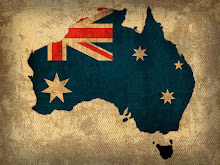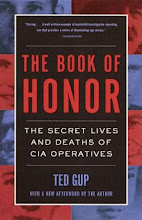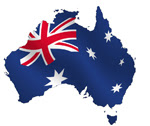
Quantrill's Raiders were a loosely organized force of pro-Confederate bushwhackers who fought in the American Civil War under the leadership of William Clarke Quantrill. The name "Quantrill's Raiders" seems to have been attached to them long after the war, when the veterans would hold reunions.
 William Clarke Quantrill, Confederate Guerrilla Leader
William Clarke Quantrill, Confederate Guerrilla LeaderOrigins
Missouri was fertile ground for the outbreak of guerrilla warfare in late 1861. Secessionists had already been organized to some extent by the proslavery "Border Ruffian" movement of the 1850s, in which Missourians crossed the border into the Kansas Territory in an effort to make it a slave state. Unionists were less well organized, but the populace was nevertheless deeply divided.
 The Territory of Kansas 1854 - 1861
The Territory of Kansas 1854 - 1861In 1861, pro-Union abolitionist and regular U.S. army commander Nathaniel Lyon, with the help of German immigrants living in Missouri succeeded in forcing pro-Southern forces known as the Missouri State Guard under the command of the Missouri Governor Claiborne Jackson and General Sterling Price, across the state, from St. Louis to Springfield, Missouri.
 Nathaniel Lyon (July 14, 1818 – August 10, 1861) was the first Union general to be killed in the American Civil War
Nathaniel Lyon (July 14, 1818 – August 10, 1861) was the first Union general to be killed in the American Civil War Lyon and Frank Blair a St. Louis politician, also effectively cut-off all routes south, preventing Missourians from traveling in that direction to join the Confederate army. These swift actions trapped pro-Southern Missourians in the state and behind enemy lines. Missouri became occupied by pro-Union forces. Men trapped in the state fought any way they could. Loose organizations of pro-Southern men were called partisans, irregulars, guerillas, bushwhackers and rangers.
 Claiborne Fox Jackson (April 4, 1806 – December 6, 1862) - lawyer, soldier, and politician. He was the 15th Governor of Missouri in 1861, then governor-in-exile for the Confederacy during the American Civil War.
Claiborne Fox Jackson (April 4, 1806 – December 6, 1862) - lawyer, soldier, and politician. He was the 15th Governor of Missouri in 1861, then governor-in-exile for the Confederacy during the American Civil War. Sterling Price (September 20, 1809 – September 29, 1867) - lawyer, planter, soldier and 11th Governor Missouri (1853 to 1857), also served as a United States Army brigadier general during the Mexican-American War, and a Confederate Army major general during the American Civil War.
Sterling Price (September 20, 1809 – September 29, 1867) - lawyer, planter, soldier and 11th Governor Missouri (1853 to 1857), also served as a United States Army brigadier general during the Mexican-American War, and a Confederate Army major general during the American Civil War. Francis Preston Blair, Jr. (February 19, 1821 – July 9, 1875) American politician and Union Army general during the American Civil War.
Francis Preston Blair, Jr. (February 19, 1821 – July 9, 1875) American politician and Union Army general during the American Civil War.An insurgency flared in those areas where Union forces were weakest. As Union soldiers concentrated to fight against Price's State Guard and regular Confederate forces under General Ben McCulloch, few were available to occupy the territory to the rear. It was only in late 1861, as garrisons were established in important towns, that the weaker and more poorly organized Confederate guerrillas were defeated, and stronger, more capable units came together. The most notorious of these was that led by William Clarke Quantrill.

Benjamin McCulloch (November 11, 1811–March 7, 1862) was a soldier in the Texas Revolution, a Texas Ranger, a U.S. marshal, and a brigadier general in the army of the Confederacy.
Methods and legal status
Quantrill was not the only Confederate guerrilla operating in Missouri, but he rapidly won the greatest renown. He and his men ambushed Union patrols and supply convoys, seized the mail, and occasionally struck towns on either side of the Kansas-Missouri border. Reflecting the internecine nature of the guerrilla conflict in Missouri, Quantrill directed much of his effort against Unionist civilians, attempting to drive them from of the territory where he operated.
 1851 Navy Colt
1851 Navy ColtUnder Quantrill's direction, Confederate partisans also perfected military tactics such as coordinated and synchronized attacks, planned dispersal after an attack using pre-planned routes and relays of horses, and other technical methods, including the use of the long-barreled revolvers that later became the preferred firearm of western lawmen and outlaws alike. The James-Younger Gang, many of whose members had ridden with Quantrill, applied these same techniques after the war.
 Jesse and Frank James, 1872
Jesse and Frank James, 1872Quantrill claimed sanction under the Confederate Partisan Ranger Act, which authorized certain guerrilla activities, and apparently he had received a regular Confederate commission as a captain. However, like almost all of the Missouri bushwhackers, he operated outside of the Confederate chain of command.
 Battle of Lawrence, Kansas
Battle of Lawrence, KansasQuantrill's most notable operation was the Lawrence Massacre a revenge raid on Lawrence, Kansas in August 1863. It had been generally regarded for years as the base of operations of Unionist irregular raids by Redlegs and Jayhawkers into Missouri both before and during the war. Also, just a month prior, some of the imprisoned family members, women and children, of Quantrill's men had been killed in the collapse of the overcrowded prison in Kansas City.
According to Union records, 167 men and teenage boys were massacred in this raid. Confederate authorities were appalled; their lawless presence proved an embarrassment to the Confederate command. Yet the Confederate generals appreciated his effectiveness against Union forces, which never gained the upper hand over Quantrill.
Among Quantrill's men was a free African-American man named John Noland. He was one of Quantrill's scouts, indeed reputed to be his best one. Noland who helped in scouting Lawrence, Kansas before the raid by Quantrill's men in 1863. He joined Quantrill's Raiders because of the abuse his family suffered at the hands of Kansas Union Jayhawkers. Post-war pictures show Noland sitting with his comrades at reunions of the Raiders.
 Quantrill's Raiders Ninth Annual Reunion
Quantrill's Raiders Ninth Annual ReunionDissolution and Aftermath
Quantrill lost his hold over his men during the winter of 1863-64, when he led his men behind Confederate lines into Texas. In early 1864, the guerrillas that he had led through the streets of Lawrence returned to Missouri from Texas in separate bands, none of them led by Quantrill himself as "Bloody Bill" Anderson seems to have assumed general command by this time). Though Quantrill would gather some of his men again at the very end of 1864, the days of Quantrill's Raiders were over.
Quantrill died at the hands of Union forces in Kentucky in May 1865, but his legacy would live on. Many of his men, including Frank James, rode in 1864 under one of his former lieutenants, "Bloody Bill" Anderson, who was killed in October 1864. Much of that group remained together under the leadership of Archie Clement, who kept the gang together after the war, and harassed the Republican state government of Missouri during the tumultuous year of 1866. In December 1866, state militiamen killed Clement in Lexington, Missouri, but his men continued on as outlaws, emerging in time as the James-Younger Gang.














































Of interests, you might want to read "Jack Hinson's War"
ReplyDeleteA. S. Layman III
Thanks for the history.
ReplyDeleteSupposedly, Jesse James came to one of the reunions, many yrs after his "death". In a picture taken. Who knows.
ReplyDeletei know a quantrill and her family her name is tia she is my best friend and she lives in cromer
ReplyDelete